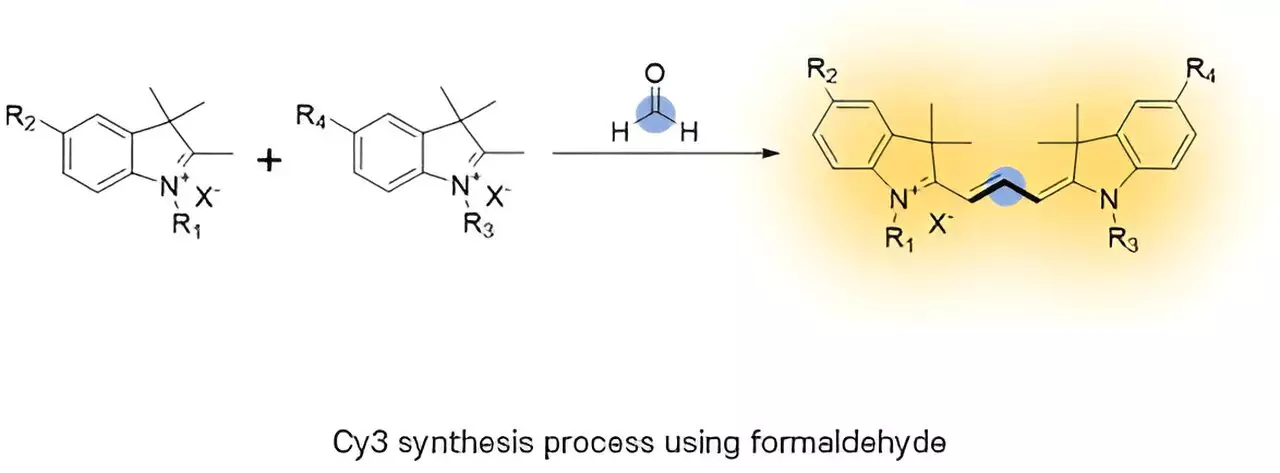Recent advancements in chemical synthesis have unveiled an innovative method to produce organic fluorophores more efficiently and affordably. A research team has successfully utilized formaldehyde, the simplest carbon-based molecule, to create trimethine cyanine (Cy3), a widely-used organic fluorophore. The significance of this breakthrough, which was published in Angewandte Chemie International Edition on September 18, cannot be understated, particularly given the vital applications of Cy3 in medical diagnostics and bioimaging technologies.
Historically, synthesizing Cy3 has posed substantial challenges. The conventional approach involves complex compounds with a high molecular weight, resulting in low atom efficiency and an abundance of byproducts that complicate purification and increase costs. These inefficiencies necessitate extensive resources and time, which hinder broader applications in critical fields such as cancer cell tracking and genetic analysis. Recognizing the need for a more efficient method, the research team pivoted towards utilizing formaldehyde, a chemical often overlooked due to its potentially toxic nature in biological systems.
A Shift in Synthetic Paradigms
By opting for formaldehyde, defined by its structure of one carbon atom, two hydrogen atoms, and one oxygen atom, the research team achieved remarkable improvements. This choice significantly simplified what was once a convoluted multi-step process into a streamlined one-pot reaction. This transformation not only accelerated the synthetic process but also minimized the generation of byproducts, thereby enhancing atomic efficiency. Through this groundbreaking technique, they indicated a new direction in organic synthesis that could pave the way for further innovations.
Implications for In Vivo Applications
An intriguing aspect of the study was its exploration of the in vivo potential of the new synthesis method. Given that formaldehyde is produced naturally during metabolic processes, the researchers wanted to assess how their findings translated to biological systems. In their examinations of rat small intestine tissues, they discerned that inflammation correlated with diminished fluorescence signals, attributed to the reduced availability of formaldehyde in inflammatory conditions. This insight underscores the potential of the technique in biological settings and offers a glimpse into how physiological conditions can impact fluorophore efficacy.
The work spearheaded by Professor Young-Tae Chang and Dr. Sun Hyeok Lee at POSTECH marks a pivotal moment in the realm of organic chemistry and bioimaging. Their success in employing formaldehyde for the synthesis of Cy3 not only is a testament to innovative thinking in chemical synthesis but also points to broader implications for the future of organic fluorophores. As research continues to develop, this novel approach could yield significant benefits in various scientific fields, enhancing our capabilities in diagnostics and bioimaging while also emphasizing the importance of re-evaluating existing methodologies to foster more sustainable and efficient practices in chemical synthesis.


Leave a Reply